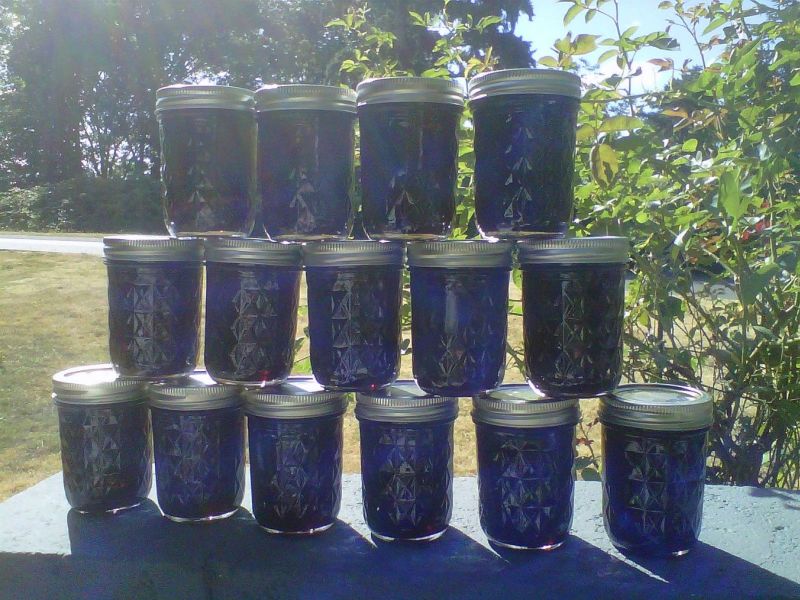 It’s blackberry picking season — fifteen jars of blackberry jelly have been “put up” (to borrow an old family expression) and I hope to do a few more before the end of the season.
It’s blackberry picking season — fifteen jars of blackberry jelly have been “put up” (to borrow an old family expression) and I hope to do a few more before the end of the season.
Even as I revel in blackberry bounty, I regret the reality: Himalayan blackberries are a non-native species threatening our natural habitat in the Pacific Northwest. It’s all I can do to keep the invasion in check in my own yard — new canes shoot out great distances over night. The way the thorny hooks lunge for the berry picker, clawing clothes, arms, hair, I swear this species resembles a feral animal more than a plant. The Himalayan blackberry first arrived on the West Coast in the 1800s. Click on this fact sheet for more details.
From my childhood in Ohio I carry memories of blackberry picking as well — my grandmother used to wait for me to bring her a couple of quarts, which she would cook, then strain with a cheesecloth and convert to “jel.” The Ohio blackberry (Rubus allegheniensis) was a much smaller, more tart variety growing on the edges of fields dotted with Queen Anne’s lace and teasel. While the blackberries are native, much to my dismay the Queen Anne’s lace and teasel are not. I learned this factoid at the Ohio Historical Center in Columbus, where they have a terrific “The Nature of Ohio” exhibit. For a list of Ohio’s invasive plants, categorized as “watch list,” “targeted species,” and “well-established,” click here.

2 responses to “Non-natives”